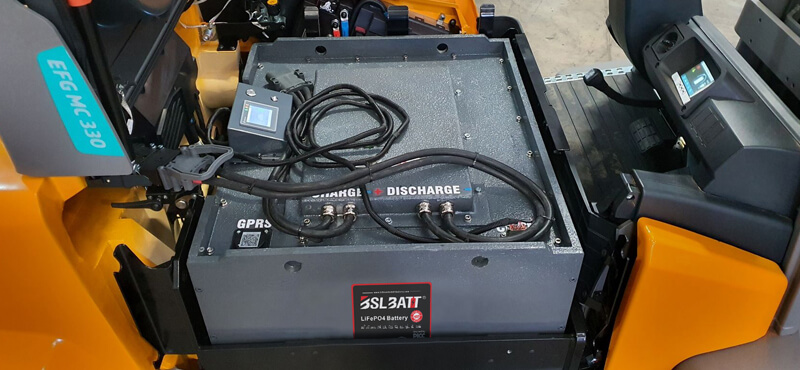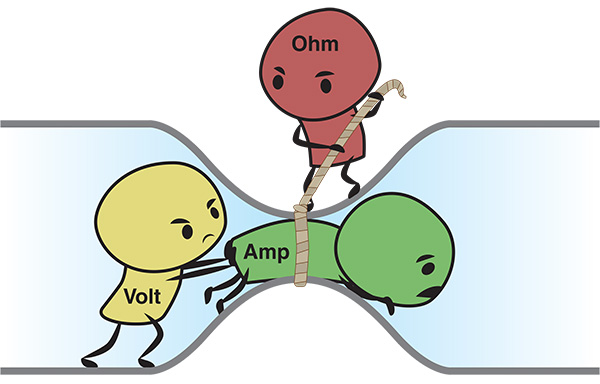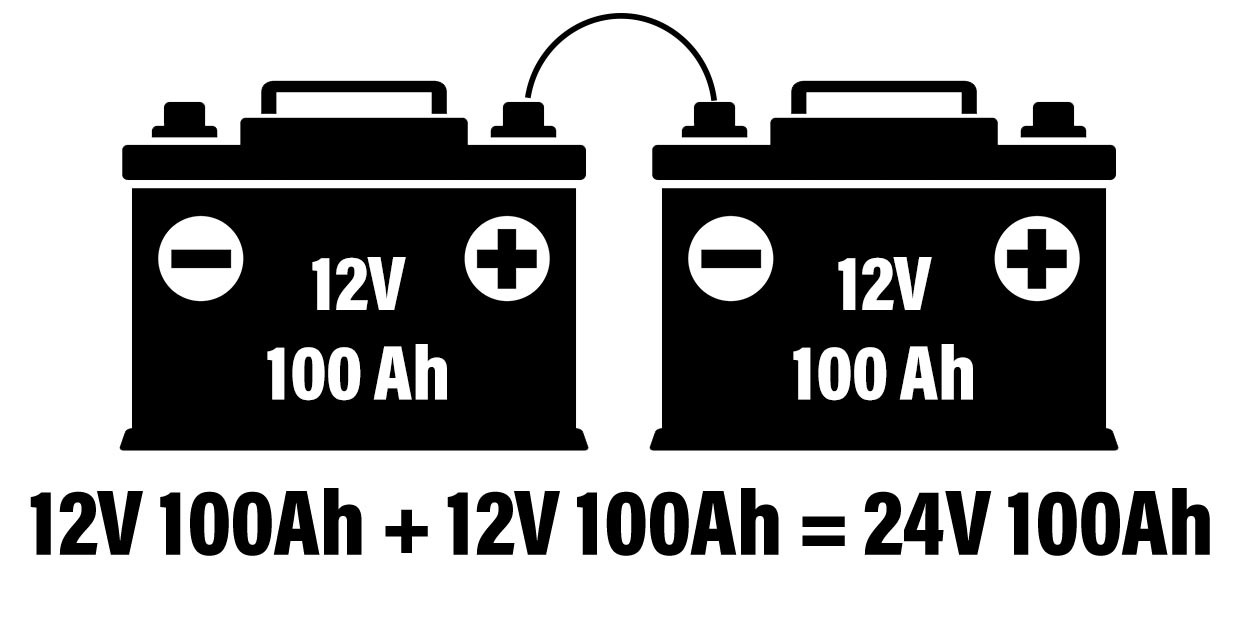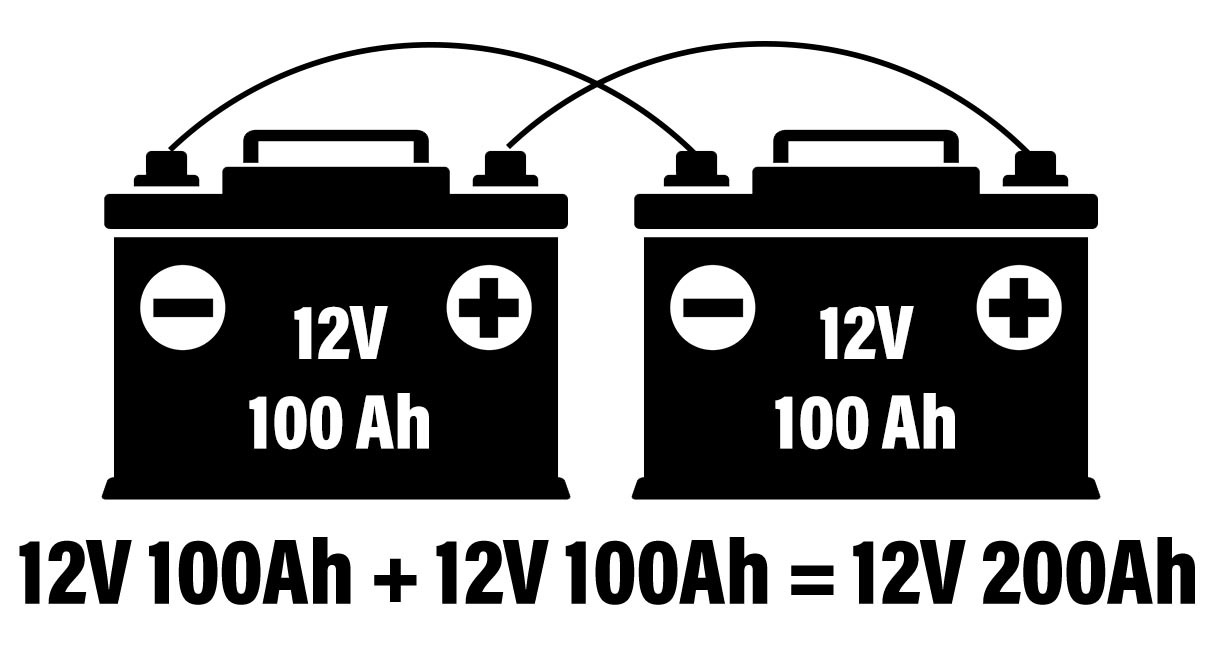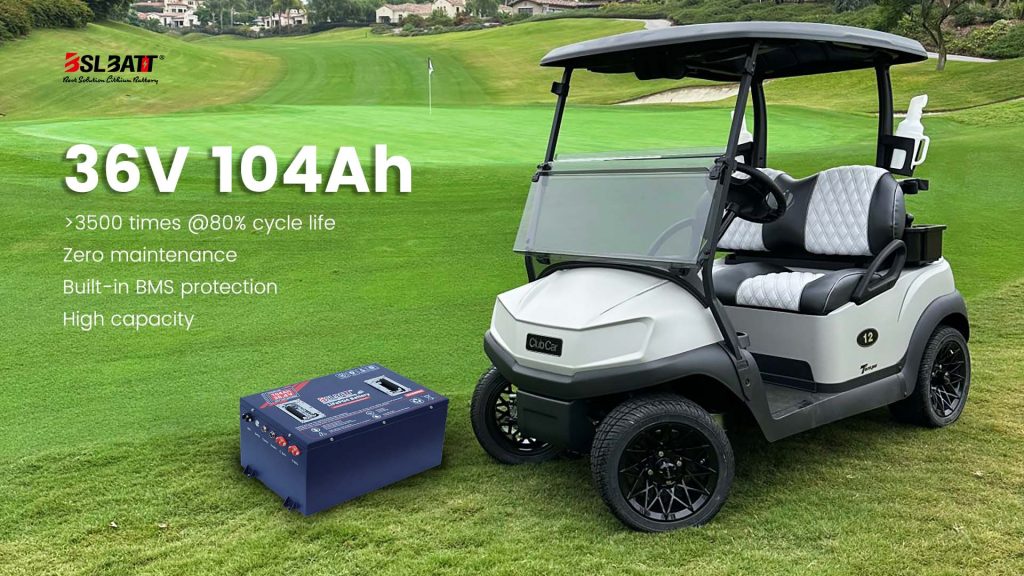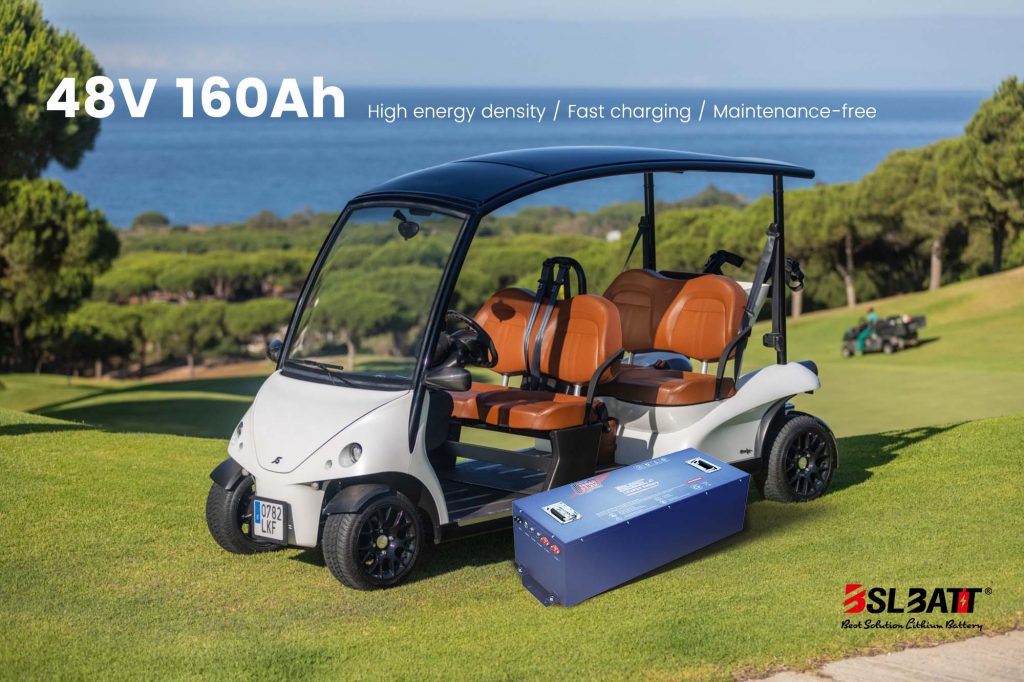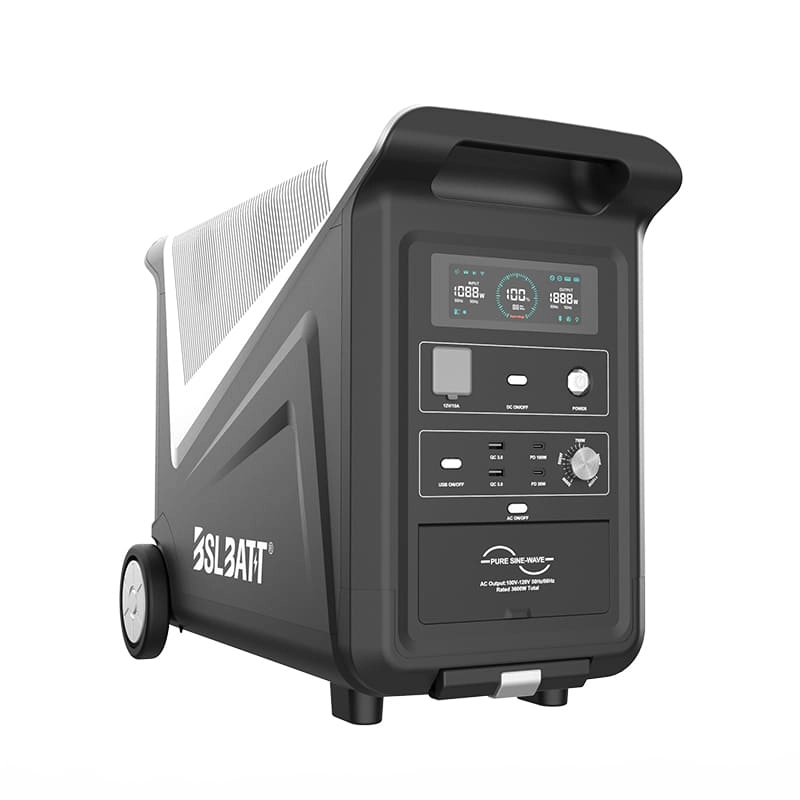Industry Application
Product Type
How to Wire lithium Batteries in Parallel or Series
| Here at Wisdom Power BSLBATT Lithium we pride ourselves on the domestic manufacturing of robust and reliable LiFePO4 batteries. It probably comes as no surprise that we get a lot of battery-related questions.
One of the most common queries is “I need more power! Do you have a battery that can give me more volts or more amps?” The answer is yes. All of our batteries can be connected to produce more power to run bigger motors (voltage – v), or extra capacity (amp hours – Ah). This called wiring a battery in series or in lithium Batteries Parallel. Wiring a battery in series is a way to increase the voltage of a battery. For example if you connect two of our 12 Volt, 10 Ah batteries in series you will create one battery that has 24 Volts and 10 Amp-hours. Since many electric motors in kayaks, bicycles, and scooters run on 24 volts this is a common way of wiring batteries. Lithium ion batteries in parallelis to increase the amp hours of a battery (i.e. how long the battery will run on a single charge). For example if you connect two of our 12 V, 10 Ah batteries in parallel you will create one battery that has 12 Volts and 20 Amp-hours. Since many small electric motors, solar panels, RVs, boats, and and most household electronics run on 12 volts this is a common way of creating a battery that will last a super long time. Series connections involve connecting 2 or more batteries together to increase the voltage of the battery system, but keeps the same amp-hour rating. Keep in mind in series connections each battery needs to have the same voltage and capacity rating, or you can end up damaging the battery. To connect batteries in series, you connect the positive terminal of one battery to the negative of another until the desired voltage is achieved. When charging batteries in series, you need to utilize a charger that matches the system voltage. We recommend you charge each battery individually, with a multi-bank charger, to avoid imbalance between batteries. If you think of electricity as water flowing through a system of pipes, voltage is best thought of as water pressure and so is the metric by which we can measure how forcefully electrical current flows. Amps would be the size of the pipe that that water flows through, and thus is the metric by which we measure how much power we can output at a given moment. Amp hours then, in this instance of plumbing analogies, is a measure of how many gallons of water are moving through your pipes over time.
I’ve always found this image (and many like it on the internet) to be helpful in explaining electricity. Basics Battery packs are designed by connecting multiple cells in series; each cell adds its voltage to the battery’s terminal voltage. Figure 1 below shows a typical BSLBATT 13.2V LiFePO4 starter battery cell configuration.
Batteries may consist of a combination of series and parallel connections. Cells in parallel increased current handling; each cell adds to the ampere-hour (Ah) total of the battery The BSLBATT B-LFP12V 12AH is an example of a series and lithium Batteries Parallel configuration. The B-LFP12V 12AH configuration, 13.2V / 12.4Ah, is shown in Figure 2.
A weaker cell in series connected cells would cause an imbalance. This is especially critical in a series configuration because a battery is only as strong as the weakest cell (analogous to the weak link in the chain). A weak cell may not fail immediately but may be drained (voltage dropping below a safe level, 2.8V per cell) more quickly than the strong ones when discharging. On charge, the weak cell may fill up before the healthy ones and be over-charged (voltage exceeding 3.9V per cell). Unlike the weak link in a chain analogy, a weak cell causes stress on the other healthy cells in a battery. Cells in multi-packs must be matched, especially when exposed to high charge and discharge currents. Figure 3 below shows an example of a battery with a weak cell.
Battery Management System (BMS) Cell ProtectionA BMS continuously monitors each cell’s voltage. If the voltage of a cell exceeds the others, the BMS circuits will work to reduce that cell’s charge level. This ensures that the charge level of all the cells remains equal, even with the high discharge (> 100Amps) and charge current (>10Amps). A cell can be permanently damaged if over-charged (over-voltage) or over-discharged (drained) just one time. The BMS has circuitry to block charging if the voltage exceeds 15.5 volts (or if any cell’s voltage exceeds 3.9V). The BMS also disconnects the battery from the load if it is drained to less than 5% remaining charge (an over-discharge condition). An over-discharged battery typically has a voltage less than 11.5V (< 2.8V per cell). Multiple Batteries in Series and or Parallel (each battery with its own BMS)BSLBATT’s 13.2V batteries may be used in series and or parallel to achieve higher operating voltages and or capacities for your specific application. It is important to use the same battery model with equal voltage and capacity (Ah) and never to mix batteries of a different age. Unless stated otherwise, BSLBATT batteries are approved for use in up to a two series and or two lithium Batteries Parallel operations, with no additional external electronics. This restriction is applied due to the fact that impedance, capacity, or self-discharge rates between cells may vary. The restriction allows for normal variations in one battery without adversely affecting the other battery. Additionally, the restriction and operating limits allows for abnormal conditions, such as weak or failing cell in one battery. Note, that the ratings for a specific battery are different when it is used in a series operation. See section below “Maximum Safe Operating Limits” for battery ratings. It is always preferred to use a single 26.4 volt battery versus two 13.2 volt batteries in series, for the single battery can internally monitor each of the 8 cells in series and ensure the charge level of all cells are balanced. The wire and connectors used to make the series/lithium Batteries parallel array of batteries shall be sized for the currents expected. Do not connect BSLBATT series lithium batteries with other chemistry batteries. In the image below, there are two 12V batteries connected in series which turns this battery bank into a 24V system. You can also see that the bank still has a total capacity rating of 100 Ah.
Parallel connections involve connecting 2 or more batteries together to increase the amp-hour capacity of the battery bank, but your voltage stays the same. To connect batteries in parallel, the positive terminals are connected together via a cable and the negative terminals are connected together with another cable until you reach your desired capacity. A lithium Batteries Parallel connection is not meant to allow your batteries to power anything above its standard voltage output, but rather increase the duration for which it could power equipment. It’s important to note that when charging batteries that are connected in lithium Batteries parallel, the increased amp-hour capacity may require a longer charge time. In the example below, we have two 12V batteries, but you see the amp-hours increase to 200 Ah.
Now we get to the question, “Can BSLBATT batteries be connected in series or parallel?” Standard Product Line: Our standard lithium batteries can be wired in either series or parallel based on what you’re trying to accomplish in your specific application. BSLBATT’s data sheets indicate the number of batteries that can be connected in series by model. We typically recommend a maximum of 4 batteries in parallel for our standard product, however there may be exceptions that allow for more depending on your application. It’s important to understand the difference between parallel and series configurations, and the effects they have on your battery bank’s performance. Whether you’re seeking an increase in voltage or amp-hour capacity, knowing these two configurations is vastly important in maximizing your lithium battery’s life and overall performance. Have more questions? Ready to purchase your next battery bank? |
A Guide to Choosing the Best 48V Lithium Golf Cart Battery
Would it be worth investing in a 48V ...
10 Exciting Ways To Use Your 12V Lithium Batteries
Back in 2016 when BSLBATT first began designing what would become the first drop-in replacemen...
BSLBATT Battery Company Receives Bulk Orders from North American Customers
BSLBATT®, a China Forklift battery manufacturer specializing in the material handling indust...
Fun Find Friday: BSLBATT Battery is coming to another great LogiMAT 2022
MEET US! VETTER’S EXHIBITION YEAR 2022! LogiMAT in Stuttgart: SMART – SUSTAINABLE – SAF...
Looking for new Distributors and Dealers for BSL Lithium Batteries
BSLBATT battery is a fast-paced, high-growth (200% YoY ) hi-tech company that is leading the a...
BSLBATT to Participate at MODEX 2022 on March 28-31 in Atlanta, GA
BSLBATT is one of the largest developers, manufacturers, and integrators of lithium-ion batter...
What makes the BSLBATT the Superior Lithium Battery for your Motive Power needs?
Electric forklift and Floor Cleaning Machines owners who seek the ultimate performance will fi...








